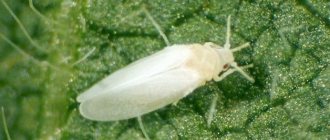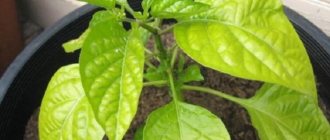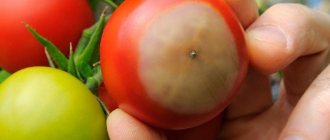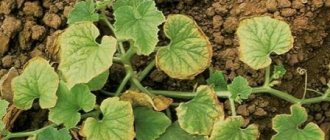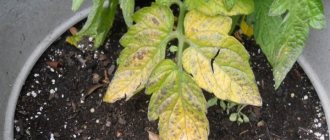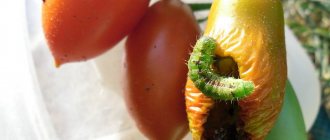When growing tomatoes, novice gardeners have a question: why do the flowers fall off on tomatoes? This problem is relevant both for plants grown in shelters (greenhouses) and for tomatoes in open ground.
The falling of flowers from vegetable bushes is a sign that mistakes were made when growing tomatoes. If a crop loses its ovaries, then it is urgent to look for the reason why this is happening. Otherwise, the summer resident risks being left without a harvest. Having figured out why the flowers fall off on tomatoes, you need to start solving the problem. If everything is done as it should, the harvest can be saved.
Errors in watering
It is advisable to water tomatoes in the evening. It is recommended to avoid moistening the soil in the morning and during the day. This circumstance is unlikely to cause the tomato flowers to fall off, but it won’t hurt to be on the safe side.
Tomatoes should only be watered with settled water at the temperature of the plant’s environment. The use of cold moisture is unacceptable. This is fraught with deterioration in the condition of plants and loss of ovaries.
Useful tips
In addition to the above activities, there are several secrets to achieve higher tomato yields in greenhouses.
Here are some of them:
- It is better to orient the beds in the greenhouse from east to west, this way the bushes are provided with optimal lighting.
- The soil in the garden bed needs to be mulched. This allows you to better retain moisture in the soil, while preventing the air from becoming waterlogged. You can use hay or grass clippings as mulch.
- It is advisable to water tomatoes using a drip irrigation system, with the drip tubes placed on top of the mulch, and not under it.
- At the moment of intensive root growth, tomato bushes need to be hilled. The moment is chosen when characteristic seals appear in the lower part of the trunk (for the first time) and when the stem in this place acquires a purple tint (for the second time). It is very important to use moist soil for hilling.
- In order for the set fruits to ripen faster, after the ovary has formed, experienced gardeners carefully pinch the top of the bush, and then gradually, over the course of several days, remove almost all the foliage from the tomato, leaving almost one bare trunk and fruit clusters.
- When the tomatoes on the bush reach the desired size, you can help them reach ripeness and turn red faster by stopping or severely limiting watering. Feeding is also not carried out during such a drought.
- Extra early varieties of tomatoes are placed in the corners of the greenhouse. In this case, as the mid-season and late varieties grow, the early bushes can be removed, and they will not shade the main bed.
- After harvesting and removing the bushes from the garden bed, the soil should be carefully loosened, but deep digging, accompanied by mixing of soil layers, should not be carried out.
- Tomato tops collected from the garden should not be thrown away. Tomatoes grow well on their own leftovers. In order to provide them with this opportunity, the tops are cut into small fragments and embedded in the ground at the same time as loosening. Over the winter, much of the residue will rot and create the best organic fertilizer you can think of.
Drying of flowers in tomatoes growing in a greenhouse is a problem that occurs quite often. Despite this, any experienced gardener will confirm that a truly good tomato harvest can only be obtained by growing the crop under film. If you approach the issue responsibly and take into account all the nuances, then the shedding of flowers in tomatoes can easily be avoided, and in this case the achieved result will meet all expectations and even exceed them.
Maintaining air humidity
Tomatoes do not tolerate excessive moisture. It is recommended to maintain the value of the important parameter at 70%.
As the humidity of the environment increases, the pollen of tomato flowers loses its volatility. Plants lose the ability to self-pollinate. This leads to shedding of pollen and death of “empty” flowers without an ovary.
Prevention of flower falling
Since the disease is easier to prevent, before planting tomatoes in a greenhouse, you should immediately assume possible future problems and try to solve them “on the shore.” Prevention of flower falling is as follows:
- For sowing, it is necessary to carefully select a variety suitable for growing in protected soil. Seeds must be of high quality. It is better if they are purchased rather than hand-assembled.
- The beds should be positioned correctly, planting low-growing varieties of tomatoes in well-lit places, and taller ones behind them.
- Do not plant seedlings close to each other. As they grow, the bushes begin to shade each other and compete for nutrients. The thick leaves make it too wet and dark. As a result, the plants suffer and the flowers fall off. The optimal distance between determinate varieties is 35-40 centimeters; between indents – 45-60 centimeters.
- Fertilizer application must be timely. Portions are balanced. So, before the formation of ovaries, it is necessary to add 30 grams of ammonium nitrate, 80 grams of superphosphate and 17 grams of potassium salt under the tomatoes. As you can see, the proportion of nitrogen at this time should be small. During flowering, the dose of nitrogen should be minimal. At this time, plants need potassium and phosphorus.
Additional tips:
- sometimes the bush gets rid of flowers if there are too many of them, because it cannot withstand the load. You can help him with this by periodically shaking the bushes. At the same time, all empty flowers will fall off and full-fledged flowers will be pollinated;
- To prevent plants from suffering due to a lack of phosphorus, which is responsible for the formation of ovaries and their pollination, when planting seedlings, be sure to put a tablespoon of superphosphate in the hole and mix it with the soil. Earlier use of a phosphorus-containing preparation will saturate the plant with the necessary element at the very beginning of its growth;
- if the plants are planted close to each other, then an additional light source must be installed next to them;
- Particular care must be taken when handling nitrogen-containing fertilizers. An overdose of them leads to fattening of the bushes, flowers and ovaries will fall off. Under no circumstances should you give tomatoes fresh manure. Abundant watering (nitrogen is easily washed out) and the application of phosphorus and potassium fertilizers will help to quickly reduce the nitrogen content in the soil;
- If flowers fall off, faded inflorescences should be removed in time. Then the plant will redirect its forces to other flowers, as well as the creation of new buds.
Nutritional deficiencies
Improperly organized growing conditions risk causing the ovaries on tomatoes to fall off. The plant needs a sufficient amount of nutrients.
Tomatoes get everything they need from soil, water, and additional fertilizing. If one of the system-forming factors is violated, then it is necessary to look for a replacement or another solution to the problem.
Why do tomato flowers fall off?
If you notice that flowers have begun to fall en masse, you need to take immediate action, otherwise you won’t be able to save the harvest. But, first of all, it is necessary to establish the reason for what is happening, why the flower did not open, began to dry out and eventually fell off.
The most common reasons:
It's very hot in the greenhouse
In summer, in the sun, the temperature inside the greenhouse reaches 40 degrees, or even higher. Heat affects fertilization, as pollen becomes sterile at this temperature. Unfertilized flowers wither and fall off.
It's too cold in the greenhouse
If you do not control the temperature in the greenhouse and allow a serious drop in temperature down to below 15 degrees, then the biological processes occurring in the plants’ bodies slow down sharply, the pollen does not fully ripen, which means that in the future it will not be able to fulfill its function.
Increased air humidity
When humidity is above 75%, the pollen structure changes. It becomes lumpy, its particles stick together. It becomes unsuitable for participation in the process of ovary formation, since it does not completely spill out of the anthers. As a result, the flowers gradually die off.
Note!
Conversely, in dry climates, pollen does not germinate at all. The anthers remain empty.
Pollination difficulties
In open ground, pollination occurs naturally - with the help of wind or pollinating insects. In a greenhouse, due to the lack of wind and living assistants (who open the anthers), it is difficult for pollen to reach its destination and fertilize the flower. As a result, the plants do not form ovaries, since the flowers remain sterile.
Poor seed quality
If expired seeds or dummy seeds were used during sowing, then even if they sprout, the plants from them will turn out weak. Naturally, underdeveloped tomato bushes do not have the strength to bloom, so it can be very sparse, and lifeless flowers fall off over time.
Using the wrong variety/hybrid
In greenhouse conditions, those varieties (hybrids) that are intended for cultivation only in open ground grow poorly. That is, varietal plants that are not suitable for the greenhouse climate will grow poorly, since environmental conditions do not allow them to develop normally.
By the way!
If flowering is sparse or the flowers fade and fall off, then most likely the problem is the use of seeds from a hybrid variety. Remember that hybrid varieties do not produce normal offspring. And even if tomatoes grown from a hybrid bloom, the quality of the fruit will be completely different from the mother’s.
Secondary reasons:
- The amount of nitrogen in the soil affects the formation of ovaries. If there is too much of this element, then all the energy of the bush goes to the formation of tops, but not to flowering. The flowers that appear quickly change the color of the stalk and fall off.
- Poorly fertilized soil also causes poor flowering and color loss. The plant tries to evenly distribute the scarce nutrients and minerals, but it does not have enough strength to nourish the abundance of flowers, so it gets rid of them as if it were excess ballast.
- The duration and quality of flowering are affected by the presence of magnesium and boron in the soil. If there are few of them, the flowers become affected by brown spots and gradually die off.
- Excessive watering, soil compaction, and regular stagnation of water at the base of the stem cause the development of fungal diseases and various rots. When roots from ground organs are infected by fungi, the first to suffer are flowers and leaves, which begin to fall off the plant en masse.
- When planted densely, plants are poorly illuminated by the sun. Excessive shade also affects flowering. Without enough sunlight, the flowers wither and fall off.
- When planting seedlings frequently, a weak root system is formed. During intensive growing season and flowering, the roots cannot fully nourish all parts of the bush, and, first of all, the flowers suffer. They dry out and fall off.
On a note!
With uneven watering, temperature changes, or excessive application of fertilizers, the structure of the flowers changes: the stigma of the pistil becomes irregularly shaped, it is not completely inside, but partially protrudes beyond the tip of the stamens, and it becomes impossible for pollen to get inside. As a result, fertilization does not occur and mass abscission of inflorescences occurs.
Use of defective seeds
It is recommended to grow tomato seedlings from seeds purchased in the store. Attempts to provide yourself with seeds on your own often result in failure.
Many modern hybrids are not capable of such reproduction. Plants can sprout and grow safely, but the “pleasure” is that the ovary on the tomatoes falls off.
What to do to prevent flowers and ovaries from falling off
If tomatoes are growing in a greenhouse, you need to monitor the weather forecast and, if necessary, cover it additionally. You can also place eggplants with hot water between the rows. It is best if it is possible to install something to heat the greenhouse, at least a potbelly stove.
Properly organized watering is very important:
- You can water tomatoes only in the evening; daytime and morning watering is harmful to the plant.
- The water should stand for 24 hours: after each watering, the containers are filled with fresh water, and it sits until the next watering. This is necessary not only so that not the most useful substances evaporate from tap water, but also for warming up. Cold water is death for tomatoes.
If flowers fall off from a lack of nitrogen, you need to prepare a simple and effective organic remedy - an infusion of cow manure (mullein) in water. Fertilizing with such a solution will not only save the color and ovary, but will also significantly improve the taste of ripe fruits: in addition to nitrogen, mullein also contains phosphorus and potassium.
In the absence of manure, water the beds with a 2-3-day infusion of green tea - 1 glass of dry tea leaves per bucket. This amount is enough to water 3 m². Boric acid solution also prevents ovary shedding. It is prepared in the proportion of 1 teaspoon of acid per 10-liter bucket. The soil is treated with water at room temperature.
If signs of disease or insect pests appear, appropriate preparations or mechanical control methods (loosening, collecting caterpillars) are used.
And lastly: when purchasing tomato seeds for your garden, do not be lazy to inquire about the qualities of this variety and find out whether this or that hybrid is capable of reproduction.
Why flowers and ovaries fall off on tomatoes: video
Preventive measures
The surest way to prevent diseases and all kinds of problems is to create optimal conditions for the proper growth and development of pepper. In greenhouse conditions:
- maintaining cleanliness;
- proper soil preparation;
- disinfection;
- air circulation.
In a greenhouse, the soil potential deteriorates, pathogenic bacteria and fungi appear, so it is necessary to feed the soil even before planting fruit crops on it. In autumn you can use manure as fertilizer. During the winter, the soil becomes saturated, thereby getting rid of harmful pathogens.
Note!
In spring, the soil should warm up 2 weeks before planting; it must be fertilized with humus or mineral fertilizer.
Why Vanka is wet and drops future flowers - all sorts of reasons
The following reasons lead to the fall of balsam buds::
- lack of potassium in the soil to support a long flowering period of impatiens;
- cold air flow;
- negative reaction to displacement;
- improperly selected soil;
- poor quality watering;
- presence of pests and parasites;
- too dry air;
- finding the plant near drafts;
- poor feeding;
- inappropriate time for transplantation;
- excess nitrogen;
- drying out of the earthen coma;
- the effect of direct sunlight on the plant;
- tobacco smoke;
Reference! Purchased balsam always sheds buds during a two-week acclimatization period in new conditions.
